The SilverStone Permafrost PF120, PF240, and PF360 ARGB AIO Coolers Review
by E. Fylladitakis on June 17, 2020 10:00 AM EST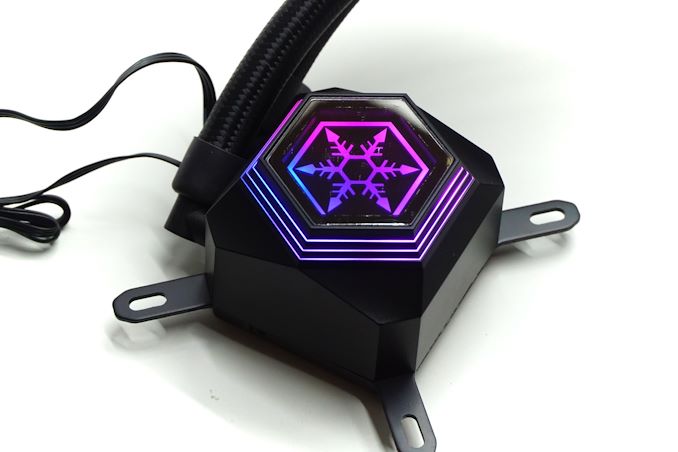
SilverStone is a well-known name amongst advanced users and enthusiasts. The company earned its reputation from its first PSUs and original case designs, and soon diversified towards cooling related products. Their products usually are designed to be cost-effective, with a focus on practicality and quality instead of extravagant aesthetics. That tactic served SilverStone very well in the past, some of their CPU tower coolers have become very good values for the price.
Given SilverStone's success with air coolers, today we are switching tracks to liquid coolers and taking a look at SilverStone’s latest all-in-one (AIO) “Permafrost” cooler series. With multiple models covering the most popular cooler sizes, SilverStone is looking to tap into what has continued to be a popular market for alternative high-performance coolers. And with the inclusion of Addressable RGB (ARGB) lighting, SilverStone is perhaps bowing to a bit to market pressures as well by including RGB lighting in their new AIO coolers.
Altogether, SilverStone has released three Permafrost ARGB AIO coolers: the PF120, PF240, and PF360. As their names suggest, they are designed with radiators that use one, two, or three 120 mm cooling fans respectively. And for today's review, we're going to be looking at all three models.
| SilverStone Permafrost Coolers | |||||
| PF360-ARGB | PF240-ARGB | PF120-ARGB | |||
| Size | 360mm x 120mm | 240mm x 120mm | 120mm x 120mm | ||
| Fan Thickness | 25mm | ||||
| Radiator Thickness | 28mm | ||||
| Fan Noise (Rated) | 7.4 - 35.6 dBA | ||||
| Tube Length | 400mm | ||||
| MSRP | $129.99 | $99.99 | $79.99 | ||
As mentioned previously, all three coolers also incorporate RGB lighting. With RGB being the latest industry trend and considering the significant market slice that it currently holds, it seems that SilverStone could not afford to not have RGB-related products available. Thankfully, however, unlike so many vendors, SilverStone isn't treating the inclusion of RGB lighting at a justification for charging high prices. So while these new coolers aren't budget products by any means, their retail price is not forbidding, making them an enticing option for enthusiasts that wish to combine aesthetics and performance while on a budget.
Packaging & Bundle
SilverStone supplies their new Permafrost series coolers in sturdy cardboard boxes that, along with the internal custom inserts, provide excellent shipping protection. The artwork on the packaging is simplistic, focused on pictures of the coolers themselves – still, that is more than enough for catching the eyes of shop shelf browsers.
All three coolers share the exact same bundle, with the sole exception being the number of fans and their wiring. Inside the box, we found the necessary mounting hardware, a small syringe with thermal paste, the necessary power and LED wiring, and an ARGB lighting controller.
Meanwhile the ARGB LEDs of all three coolers are compatible with most motherboards featuring controllable RGB lighting. On compatible systems, the LED wiring of the AIO cooler can be attached directly to the motherboard, which directly controls the RGB lighting of the cooler via the software each motherboard manufacturer provides.
And while SilverStone does include a stand-alone ARGB controller as well, it's really meant to be used as a fallback option – to manually setup lighting effects with systems that do not have a compatible motherboard. It features several pre-programmed RGB lighting effects, as well as speed and brightness options, but it certainly is not convenient to open up the case each time one wants to change any lighting setting. These coolers are definitely meant to be used with compatible motherboards, where the control is performed via software.
Depending on the version of the SilverStone PF ARGB cooler, you will receive one, two, or three 120 mm fans for their radiator. SilverStone supplies their APA1225H12 fans, which are identical to the Air Blazer 120 fan that the company markets as a stand-alone item. These fans feature a Hydro bearing engine for low noise and anti-vibration mounting pads. The nine narrow fins suggest that the fan is designed for high flow and low pressure, which should be fine considering the relatively thin radiators.


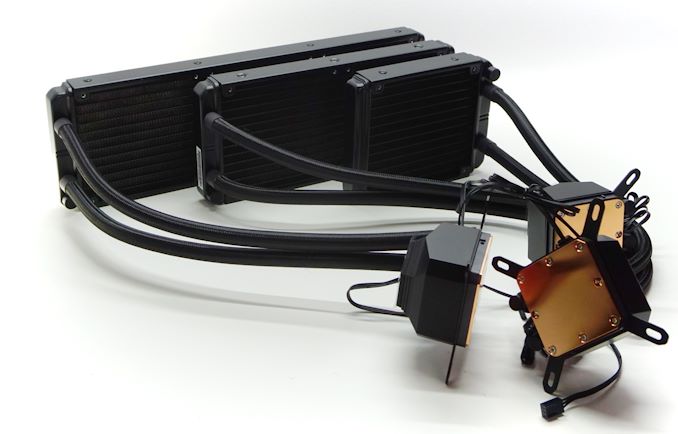
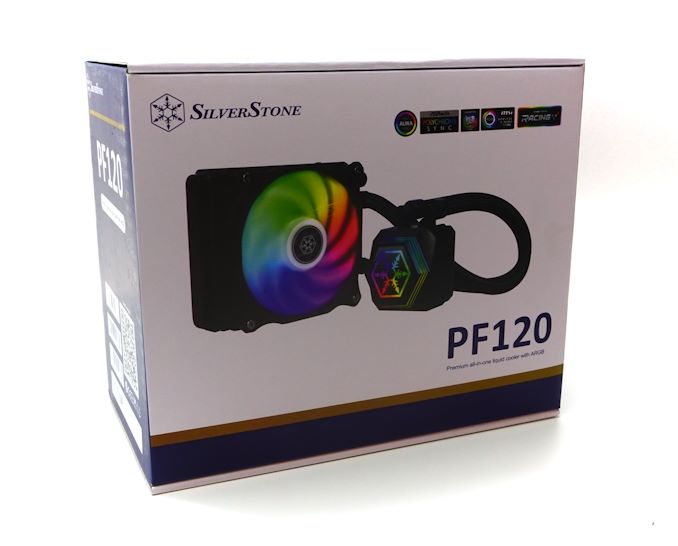
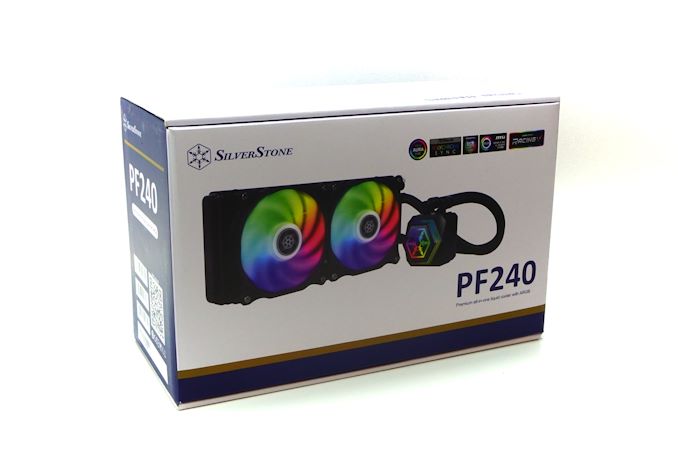
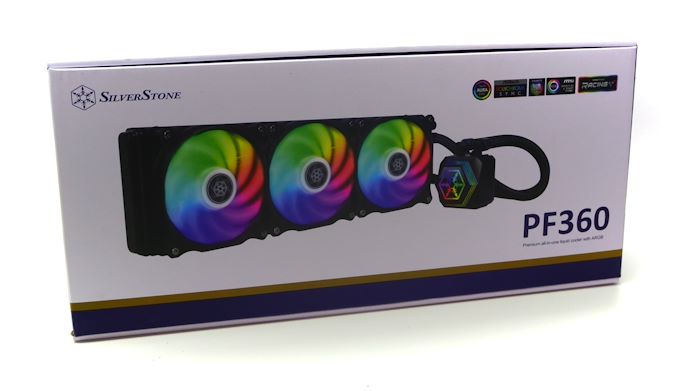
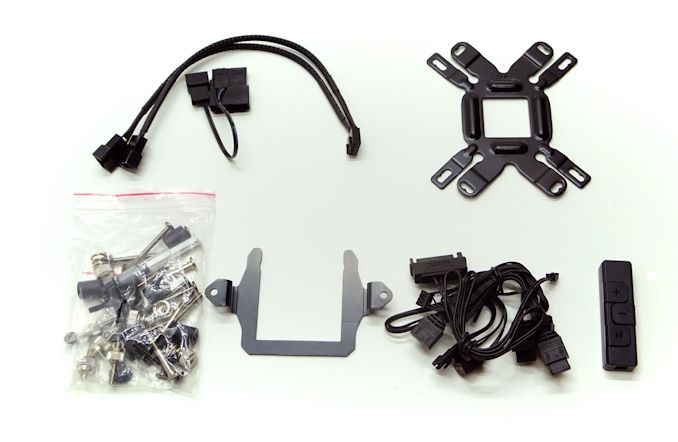
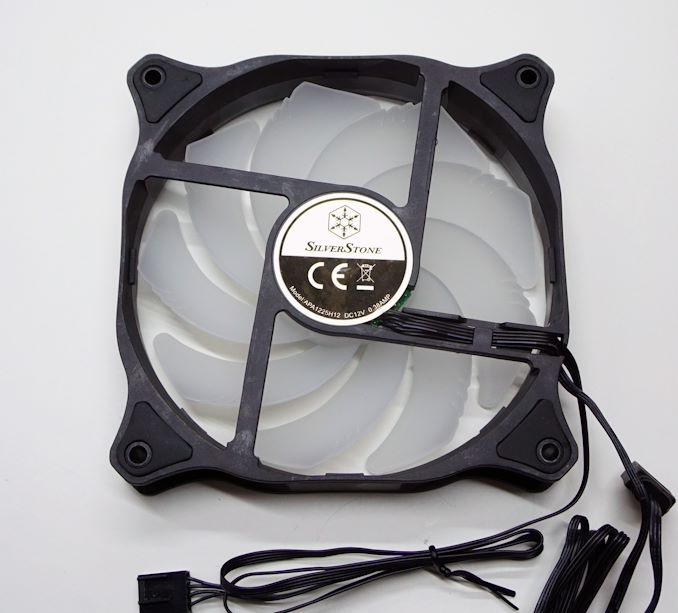








71 Comments
View All Comments
Arbie - Wednesday, June 17, 2020 - link
I have added a link to the analogous AT test of the Noctua NH-D15 air cooler. The Fractal S36 here is apparently its equal, while the SS PF360 is some 30+ percent better than the Noctua in these metrics.However, even with this advantage water is a niche within a niche (OC) within a niche (DIY enthusiast). Most of the very few who try it will only do so once.
PeachNCream - Wednesday, June 17, 2020 - link
Kind of agree. Most of the people that cross the bridge over to liquid cooling only do so once. Twice for me - one time to get a 100MHz Pentium SSS CPU to reach a stable OC of 133 MHz and once more to torture a VIA 1GigaPro when I was first starting to transition from going all out with as much computer power as possible to a point where I started to enjoy doing everything on as little thermal and energy (and eventually financial cost) demand as possible.Air cooling is more than enough and the reasons for liquid cooling generally settle somewhere far away from sufficiently fast computing. People buy them to instill in themselves a sense of satisfaction, of self-worth, of achievement, and so forth. For those seeking intangible rewards, I think, it is worth pursuing in order to tell others about the cooling and at least show photos or talk about how a CPU that would otherwise only turbo at peak speeds for 1 second is doing so for 8 seconds or how the temps are down a full five degrees when they were already far away from the maximum safe tolerances of the hardware or even how it will extend the CPU's lifespan when, ultimately, an upgrade would replace it with a newer chip long before something like that would ever matter.
BenSkywalker - Wednesday, June 17, 2020 - link
Cleaner, cooler, quieter.Air is hotter, louder and far more cluttered.
The anti water crowd is bizarre. You don't like it for whatever reason, so you argue the reality that it is just plain better. Modern high end air is *good enough*, and it is cheaper, but it is louder and less effective.
You'll only go water once....? After my first build every enthusiast grade build I've done has been under water, at this point it's easier than dealing with the monstrosity of air coolers- admittedly that is due to cases now being designed for water(used to be a pain).
This FUD campaign against AIOs is absurd, they are just plain better at the cost of being more expensive.
ses1984 - Thursday, June 18, 2020 - link
Water is noisier. Pumps are noisy.The advantage of water is that you can have a radiator somewhere other than directly over the heat source.
Whether you are using air or water, the heat still had to go somewhere. You still have to blow air over fins. The steady state temp under load will be equal between air or water given the surface area of radiator fins.
If you want a giant radiator in a small case, you need to go water so you jam a 360mm radiator on the side of the case.
Please be aware that if you have a full size atx case where you can fit a giant air cooler over the CPU, it will for sure be quieter because it doesn't have to run a water pump.
BenSkywalker - Thursday, June 18, 2020 - link
Where did you get the idea that pumps are noisier than fans...? We have tons of reviews with measured sound levels, can you link any that show a plump being louder than a fan?Dug - Thursday, June 18, 2020 - link
"Air is hotter, louder, and far more cluttered"You don't know much about air cooling, do you?
How in the world is a heatsink more cluttered than a radiator, with hoses, and more wires.
My 3800x oc'd on air never goes over 72c and is quieter than any pump made. Even if water cooling could make it cooler, it doesn't get me anywhere. The CPU will run the same.
The only issue with air is that a lot of cases are very poor in design, and users don't know how or where to set up their fans properly.
And dealing with the monstrosity of an air cooler? Apparently tightening down two screws is harder to deal with than the maintenance of water cooling?
BenSkywalker - Thursday, June 18, 2020 - link
My radiator is underneath my motherboard, I have my hose and block visible. Again, air is more cluttered.Oddly enough I also have a 3800x, 66c is where it maxes after stress testing for about an hour, normal use it rarely hits 50c.
Swapping RAM in and out is a snap no matter what slot it's in, never have to worry about VRM clearance either, in fact I don't even glance at those factors when selecting a motherboard.
Even if I were to use the stock cooler that came with my processor, we glanced at what it would look like, things start getting tight and that is certainly more compact than a decent air cooler.
PeachNCream - Thursday, June 18, 2020 - link
You end up exchanging the same amount of heat with air at some point even if you do use liquid to transfer it - thus you still have to push air over a finned metal mass somewhere in the process. Yes fluid density is higher and its easier in some cases to put it in a situation where dispersal is more effective, but the point I'm making is that there are few instances where it is a necessity to do so when operating consumer computing equipment. In a home PC, liquid cooling is done more for emotional rather than practical reasons as you can see by your own defensiveness and the highly charged responses of others that feel threatened by observations that point out the benefits are somewhat limited and generally not significant improvements beyond feelings and emotions.Some people will happily argue that smaller cases require liquid cooling. Well, smaller cases are an end-user choice as most of us ultimately live in a sufficiently large living space so that something with higher interior volume is workable. Even Hong Kong closet apartments generally have the cubic volume necessary to handle a MicroATX PC, though I can rationally see why many residents there use only a smartphone or are in economic situations that make any compute technology out of reach. Still, small cases that mandate water cooling due to high wattage component selection - that's also a personal choice just like liquid cooling and one that boils down to feelings and emotions.
It's the same for lots and lots of other purchase decisions people make on an on-going basis. Most are emotionally driven. There is no shame in admitting that is the case as we all constantly use mainly our emotions to make choices. You like the idea of liquid cooling. It gives you the right feelings from which you derive joy. Don't worry about it in that case. Buy what you like with your own income and don't be bothered by the rest of us that don't see a tangible benefit.
BenSkywalker - Thursday, June 18, 2020 - link
Emotional? It's cooler and quieter.You are using emotion about your feel feels, we are quoting measured readings.
Furthermore, this is an article about liquid cooling, why jump in if you are some air zealot? That sounds rather emotional to me.
Liquid runs cooler, liquid runs quieter. You want to run a potato build all the power to you, you won't see me trolling a potato build article saying you need to drop a few grand for an acceptable machine.
PeachNCream - Friday, June 19, 2020 - link
I don't build computers, friend. Not these days. I haven't had a desktop PC in a number of years and my couple of laptops are an Acer Aspire ES1-111M-C7DE (Linux) with a RAM and SSD upgrade and a Dell Latitude 3160 (Win10) also with aftermarket RAM and SSD. Neither even has a fan as they both use low TDP CPUs. I'm just here to chatter with the less aggressive folks in the comments box mainly about computer security, which was what my opening post about this particular cooler was concerning if you'd like to circle back around and take a look. There's little reason for me to invest much feeling one way or the other in liquid coolers though I do see significant emotionally-driven influence in your responses. As I maintained earlier, it's perfectly find that you have those feelings and operate with them, but I do find it a bit disappointing that you allow yourself to be so blinded by emotion that you attempt to impress an opposing bias on someone else so you feel as though it creates in a uninvested bystander, a nemesis worthy of your ire.